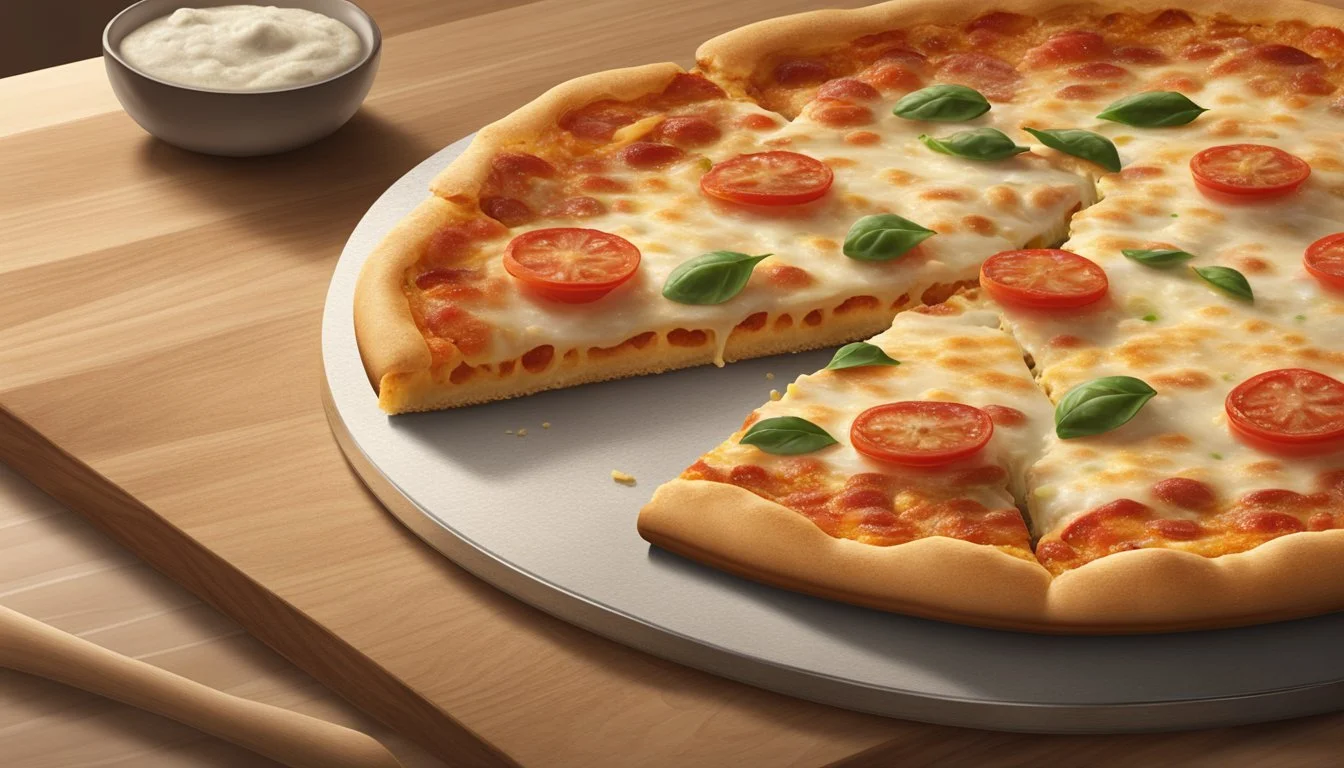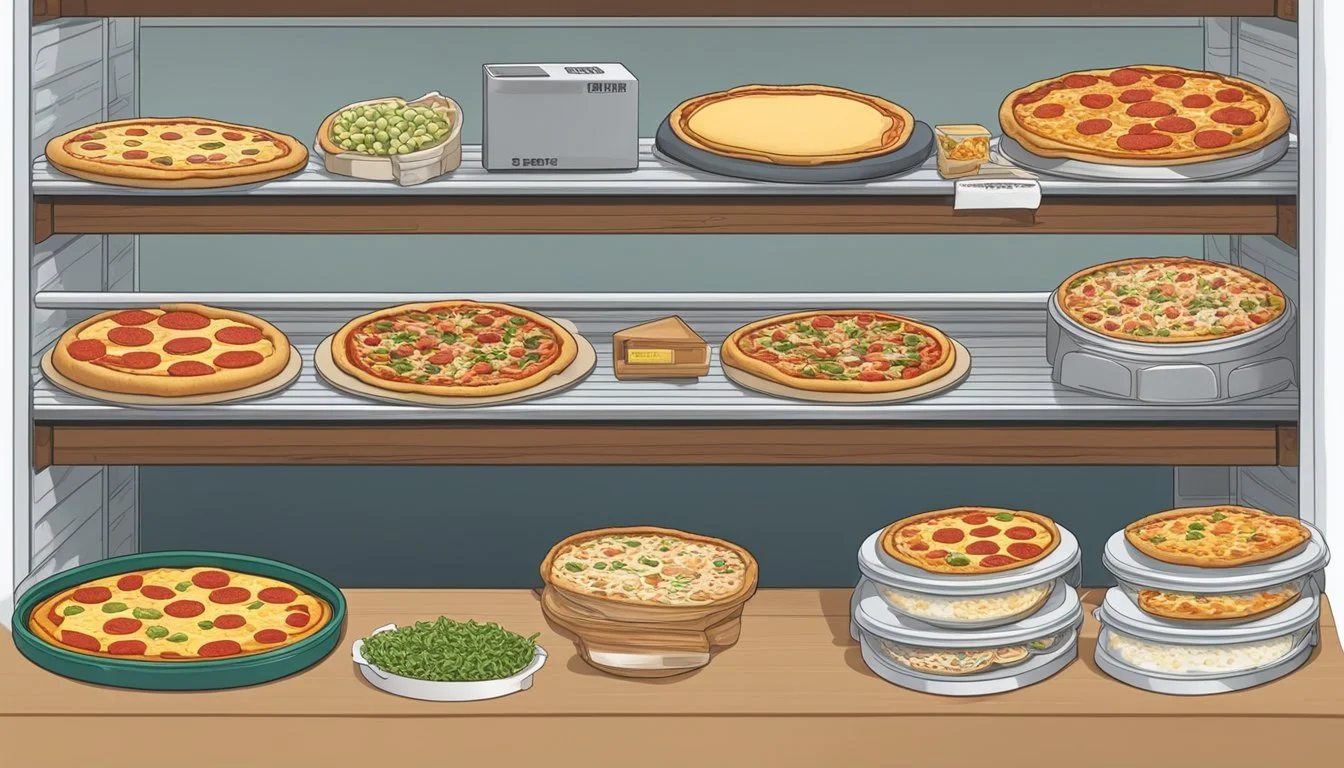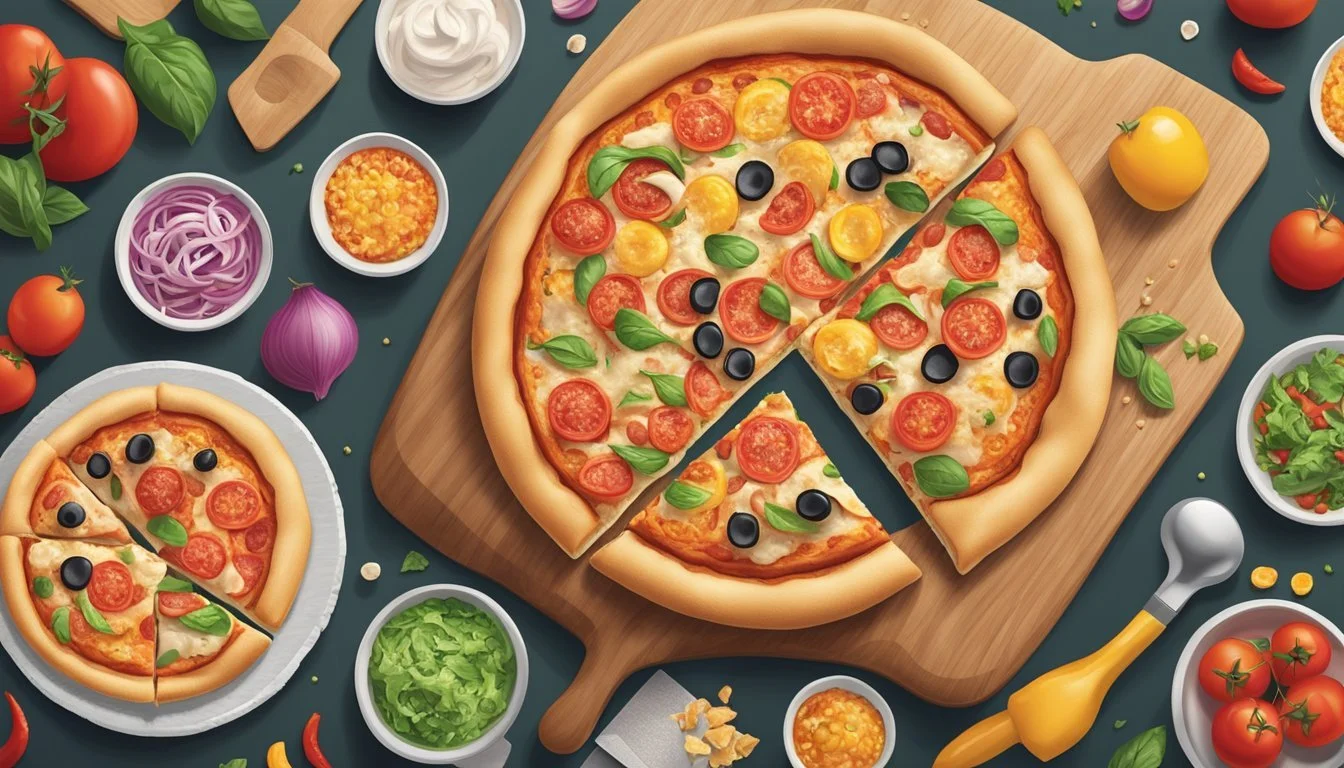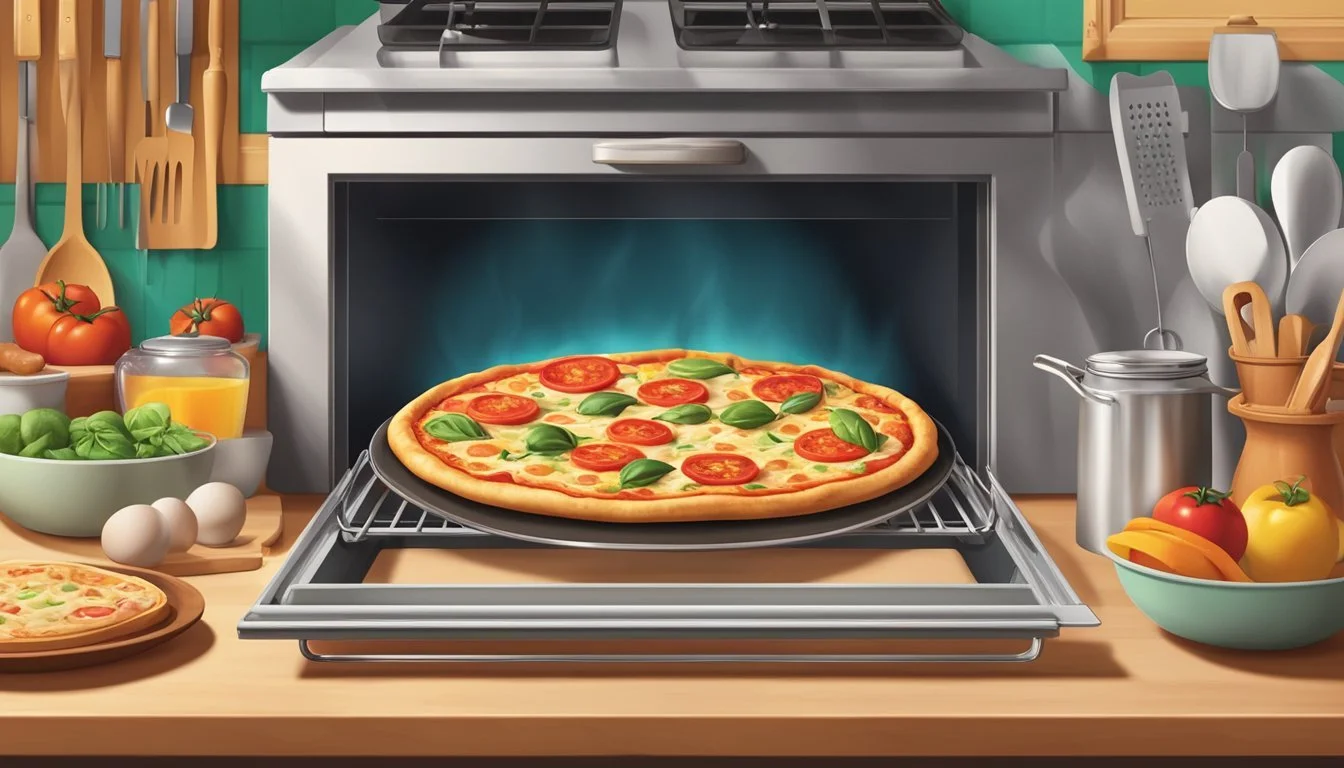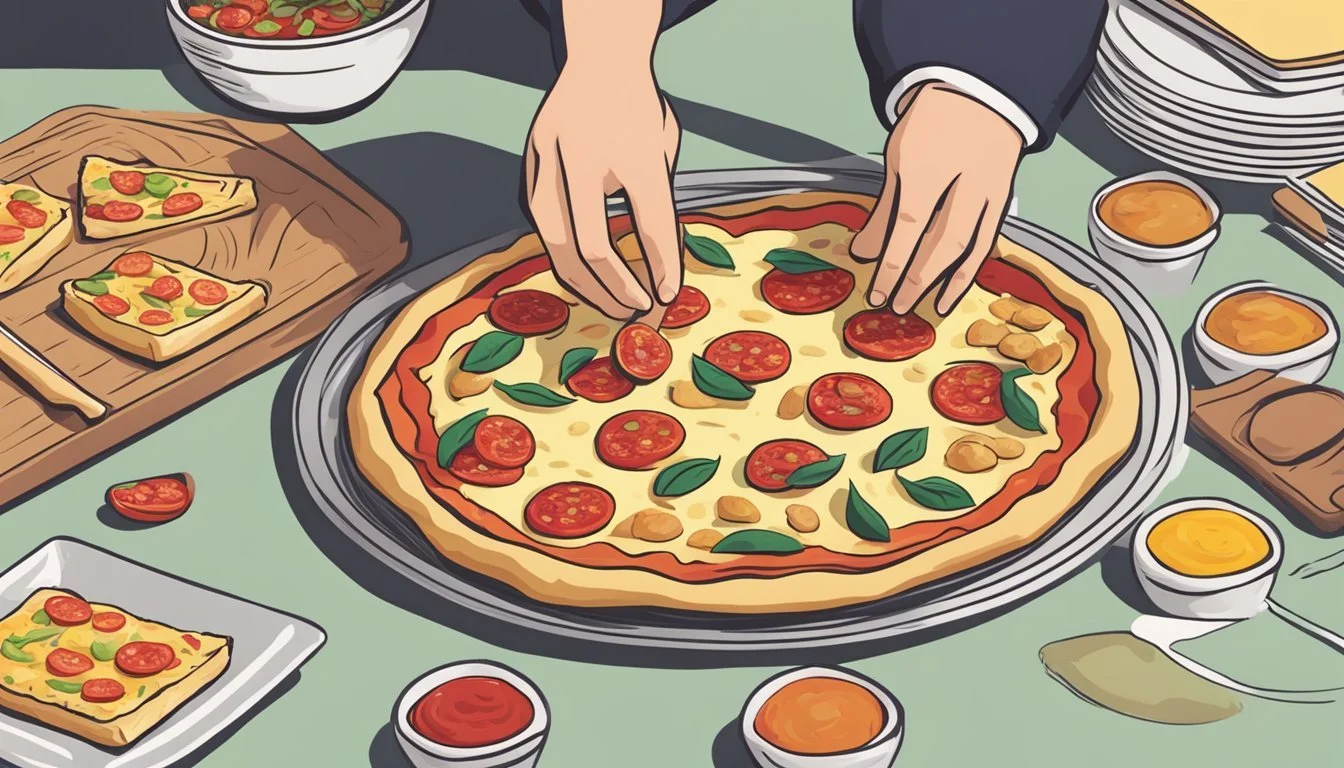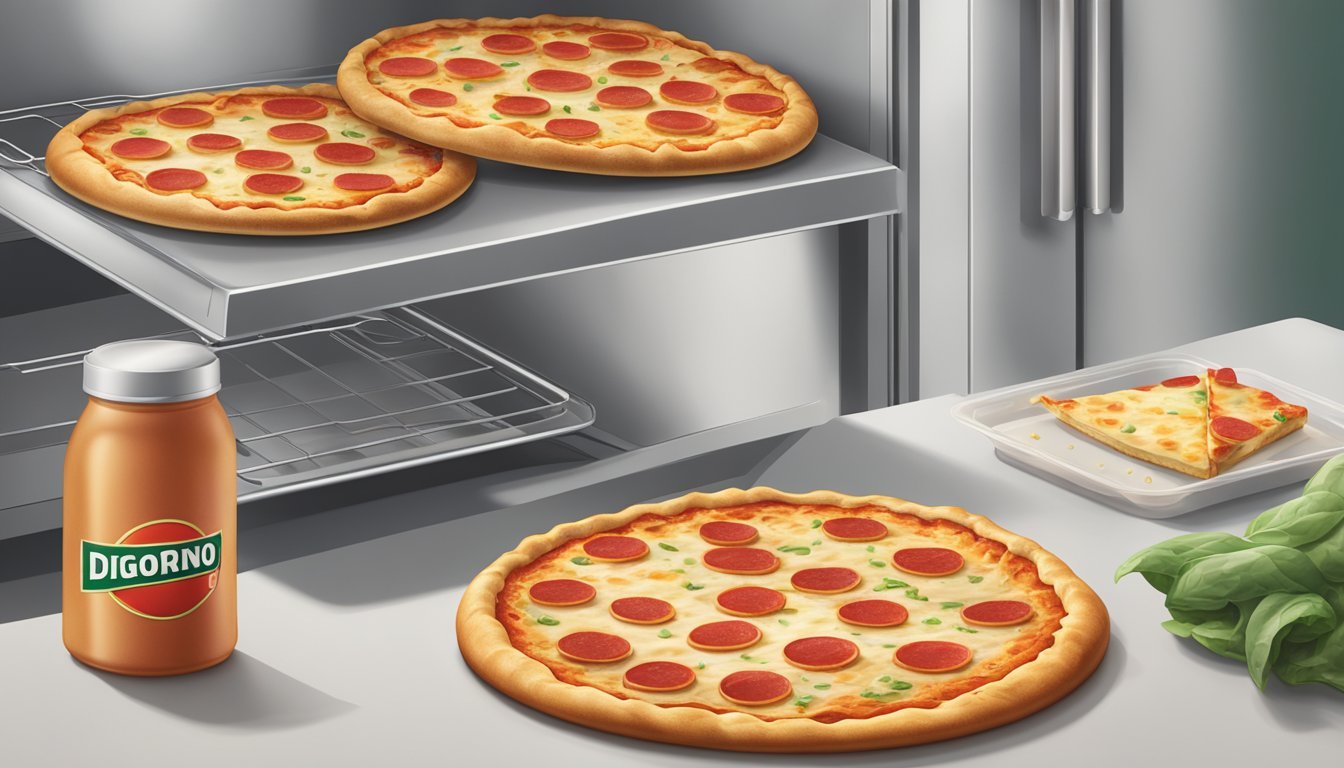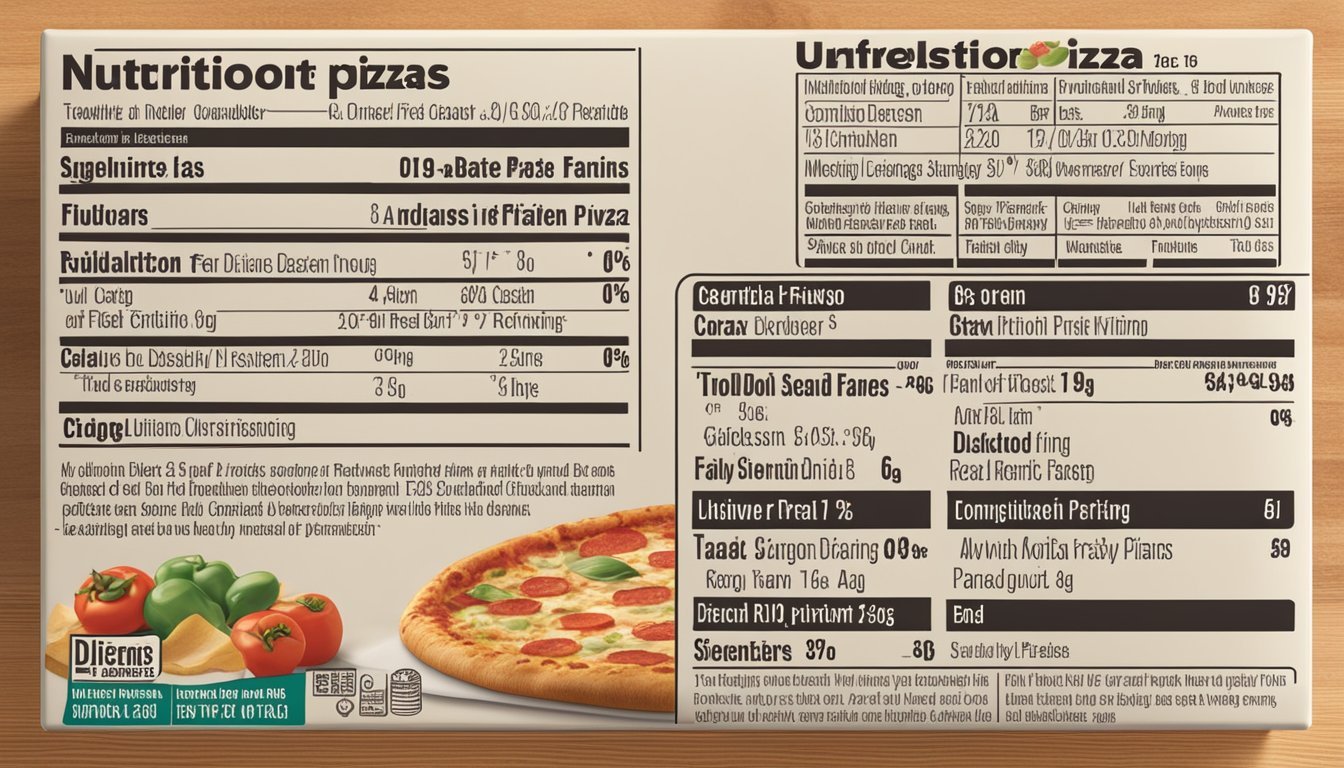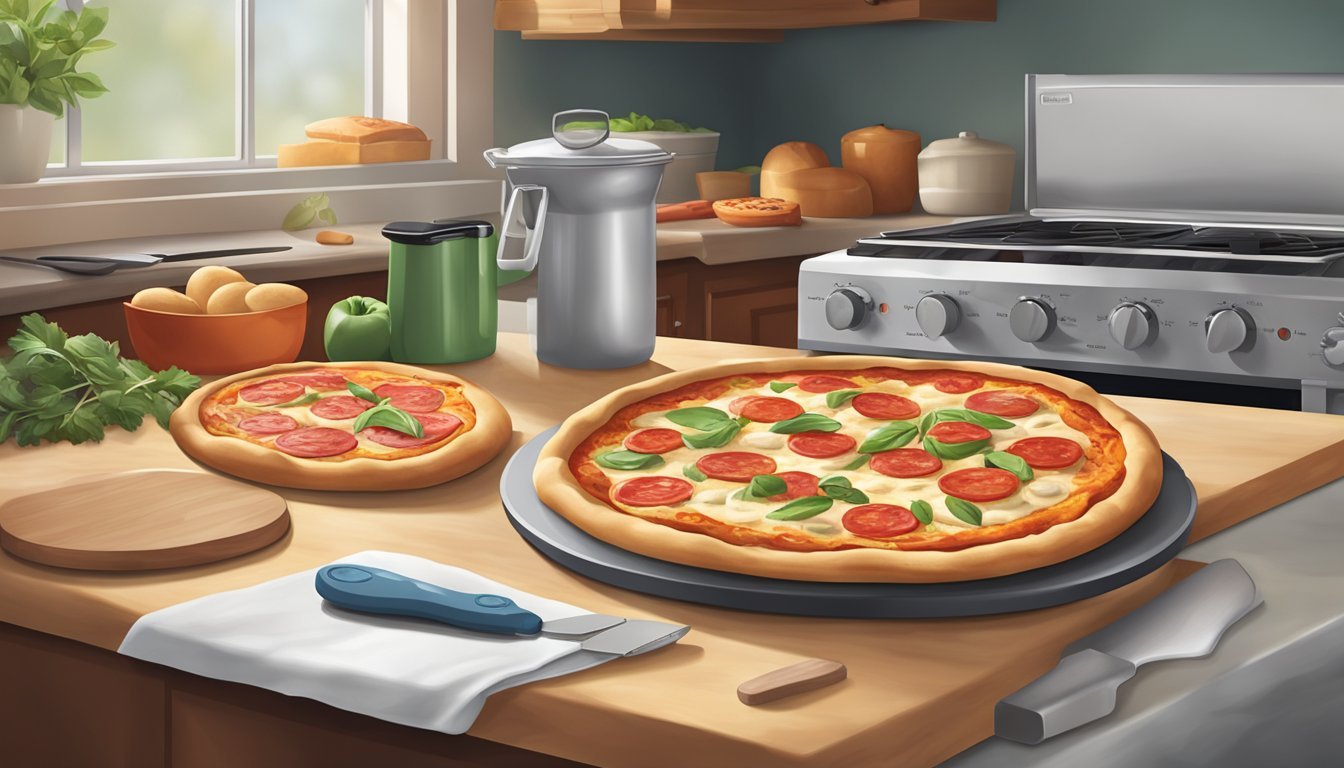How Long Does DiGiorno Rising Crust Pizza Last?
Shelf Life and Storage Tips
DiGiorno Rising Crust Pizza is a convenient and flavorful option for those who crave a quick and delicious meal. Many wonder about the longevity of this popular frozen pizza. When stored in the freezer, DiGiorno Rising Crust Pizza maintains its best quality for approximately 18 months. This extended shelf life allows you to keep a pizza on hand without worrying about it going bad too quickly.
The importance of cooking the pizza thoroughly comes into play when considering food safety. A properly stored and cooked DiGiorno Rising Crust Pizza can offer the same great taste months after purchase. However, for the best taste experience, it’s advisable to consume the pizza within the suggested time frame.
Having ready-to-bake pizzas like DiGiorno Rising Crust Pizza ensures that a savory, satisfying meal is always within reach. This makes it a reliable choice for busy households or spontaneous get-togethers, providing convenience without compromising on flavor.
Understanding Rising Crust Pizza
Rising crust pizzas are popular for their thicker, airy crust that bakes up soft inside and crispy outside. DiGiorno has made a name for itself with high-quality frozen pizzas, especially their rising crust variety.
Components of a Rising Crust Pizza
A rising crust pizza consists of several key components that contribute to its appeal:
Crust: The crust begins as a frozen dough that rises and puffs up during baking. This creates a light and airy texture.
Sauce: Tomato-based sauce often seasoned with herbs and spices. It provides a tangy counterpoint to the rich cheese and toppings.
Cheese: Typically mozzarella, known for its melting properties, stretching, and forming a luscious layer over the pizza.
Toppings: Vary widely but can include pepperoni, sausage, vegetables, and more. Each topping adds unique flavors and textures.
The combination of these elements ensures a flavorful and satisfying pizza experience.
What Makes Digiorno Unique?
DiGiorno stands out in the frozen pizza market for several reasons:
Quality Ingredients: DiGiorno uses high-quality ingredients, ensuring that each component – from the crust to the cheese – is top-notch.
Innovative Crust Technology: Their rising crust is designed to rise during baking, ensuring a fresh, bakery-style pizza every time.
Ease of Preparation: DiGiorno pizzas are designed to go directly from the freezer to the oven, simplifying the cooking process.
Consistent Results: With precise cooking instructions, DiGiorno pizzas consistently deliver a hot, delicious, and satisfying meal.
This combination of quality, innovation, and convenience makes DiGiorno rising crust pizzas a favorite among consumers.
Storage and Shelf Life
For optimal quality and safety, it’s crucial to store your DiGiorno rising crust pizza correctly. Proper storage extends the pizza’s shelf life and helps you identify signs of spoilage.
Proper Storage Techniques
Store your frozen pizza in its original packaging. The plastic wrap and cardboard box help protect against freezer burn and contamination. Always keep the pizza at a constant temperature in the freezer. Avoid placing other items on top to prevent damage to the crust.
Once opened, consider using an airtight container or resealable plastic bag if you need to refreeze. This helps maintain the flavor and texture. Thawing should be done in the refrigerator if you don’t plan to cook the pizza immediately after taking it out of the freezer.
Shelf Life of Frozen Pizza
DiGiorno rising crust pizza typically lasts for 4 to 6 months in the freezer. This timeframe ensures the best quality and taste. Freezing keeps the pizza safe to eat beyond this period, but there might be a decline in flavor and texture.
Homemade pizzas usually have a shorter shelf life, about 3 to 5 days in the refrigerator. Always check the expiration date on the packaging. If in doubt, it’s safer to discard any pizza that you suspect has been stored for too long.
Signs of Spoilage
Identifying spoiled pizza is crucial to avoid foodborne illnesses. Signs of spoilage include visible mold, an off smell, or discoloration in the cheese or crust. Freezer burn is another indicator; while it’s not harmful, it negatively affects texture and taste.
If the pizza has been left out at room temperature for more than two hours, it could be unsafe to eat. Always err on the side of caution and discard any pizza that shows signs of spoilage.
Preparation Guidelines
Preparing a DiGiorno rising crust pizza involves specific steps to ensure the crust turns golden brown and the cheese melts perfectly. Follow these detailed guidelines to make your pizza preparation easy and effective.
Preheat Instructions
Begin by preheating the oven to the temperature specified on the pizza box, typically 400°F for a crisp crust. Preheating ensures the oven reaches an even temperature, which is crucial for proper baking. Preheat takes around 10-15 minutes, depending on your oven model. Remove the pizza from the box, overwrap, and cardboard. Keep the pizza frozen until the oven is fully preheated to maintain the crust’s texture.
Baking Sheet vs. Pizza Stone
Using a baking sheet or pizza stone can impact the texture of your pizza crust. Placing the pizza directly on the center oven rack is often recommended for a crispier crust. A baking sheet can be used but may result in a softer crust. A pizza stone absorbs moisture and evenly distributes heat, enhancing the crust's texture. Preheat the baking sheet or pizza stone if you choose to use one, and handle with care using oven mitts to avoid burns.
Optimal Oven Temperature and Placement
Set your oven temperature to 400°F to achieve a perfect bake. Place the pizza directly on the center oven rack, approximately 6 to 8 inches from the bottom of the oven. This placement allows for even cooking and proper airflow around the pizza. Keep an eye on the pizza and begin checking for doneness at the lower end of the recommended bake time, usually around 22-26 minutes. Remove the pizza once the crust is golden brown and the cheese is bubbling and melted.
Using these preparation guidelines will help in achieving a delicious, perfectly cooked DiGiorno rising crust pizza every time.
Baking for the Best Results
To achieve the perfect crust and flavor for your DiGiorno rising crust pizza, follow key baking guidelines. Pay attention to recommended baking times, visual cues for doneness, and ways to troubleshoot common baking issues to ensure your pizza turns out perfectly every time.
Recommended Baking Times
For best results, preheat your oven to the temperature specified on the box, typically around 400°F (204°C). Place the frozen pizza directly on the center oven rack. Bake the pizza for 20-25 minutes. Using a convection oven may reduce cooking time slightly, so monitor the pizza closely to avoid overcooking. Always set a timer to remind you to check the pizza at the minimum recommended time.
Visual Cues for Doneness
Observe the pizza frequently. Golden brown edges, bubbly and fully melted cheese indicate it is ready. The crust should feel firm and crisp to the touch. If the toppings appear fully cooked and the cheese has reached your desired level of melt and browning, it's time to take the pizza out. This ensures a satisfying texture and flavor.
Troubleshooting Common Baking Issues
If the crust is too soft, bake directly on the oven rack rather than a baking sheet. For excessively crispy or browned edges, cover the edges with aluminum foil mid-way through baking to prevent further browning. If the cheese hasn't melted enough, lower the temperature slightly and allow a few more minutes. Use a pizza stone for an even crispier crust. Always monitor your pizza to adjust for any deviations in baking conditions.
These tips will help you bake a DiGiorno rising crust pizza with the best possible results.
Customizing Your Digiorno Pizza
Enhancing your DiGiorno Rising Crust Pizza can make it a more personalized and enjoyable experience. By adding your favorite toppings and exploring creative variations, you can transform a simple meal into a gourmet treat for friends and family.
Adding Your Favorite Toppings
Start with a basic DiGiorno Rising Crust Pizza and add a variety of fresh vegetables like bell peppers, onions, mushrooms, or olives. These toppings not only add color and flavor but also enhance the nutritional value of the pizza.
For those who enjoy a meatier pizza, consider adding cooked sausage, pepperoni, bacon, or even grilled chicken. Adding fresh herbs such as basil or oregano before baking can also boost the flavor.
To get the best results, ensure that any raw toppings are either precooked or cut into small pieces to allow for even cooking alongside the pizza.
Creative Variations and Serving Suggestions
Hosting a gathering with friends or family calls for something unique. Try using a DiGiorno pizza as a base for a buffalo chicken pizza by adding buffalo sauce, grilled chicken, and blue cheese.
For a breakfast twist, crack a few eggs on top of the pizza before baking and sprinkle with breakfast sausage or bacon bits. A drizzle of pesto or a sprinkle of feta cheese can add a gourmet touch.
Serve the customized pizza with a side salad or vegetable platter to balance the meal. Pairing the pizza with a selection of dipping sauces can also add an extra element of fun and flavor.
Post-Cooking Tips and Storage
After cooking a DiGiorno rising crust pizza, it's essential to properly cool, cut, and store it to maintain its taste and texture. Following these tips ensures that the pizza remains enjoyable even as leftovers.
Proper Cooling and Cutting Techniques
Once the DiGiorno pizza is fully cooked, remove it from the oven and let it cool for a few minutes. This cooling period allows the melted cheese to set slightly, which helps achieve a clean cut.
When cutting the pizza, use a sharp pizza cutter or knife. Start from the center and work outward to ensure equal slices and preserve the crispy texture of the crust. Cutting on a sturdy surface, like a cutting board, can also help maintain the crust's integrity.
Storing and Reheating Leftovers
For leftovers, let the pizza cool completely before storing. Place the slices in an airtight container or wrap them tightly in aluminum foil or plastic wrap to prevent them from drying out. Store the pizza in the refrigerator, where it will stay fresh for up to 3-4 days.
When reheating, use an oven or toaster oven to bring back the crispy texture of the crust. Preheat the oven to 375 degrees Fahrenheit and heat the pizza for about 10 minutes. For a quicker option, a microwave can be used, though it may result in a softer crust. Use medium power and heat for 1-2 minutes, checking regularly.
Differences in Digiorno Pizza Varieties
Digiorno offers a broad range of pizza options to cater to diverse tastes, including different crust styles and unique specialty options.
Thin Crust, Hand-Tossed, and Fully Stuffed Options
Thin Crust: The thin crust option is known for a crispy, light texture. It is a popular choice for those who prefer more focus on the toppings rather than the crust itself.
Hand-Tossed Style Crust: This variety aims to replicate the artisan quality of a pizzeria. It offers a balanced texture, providing a medium-thick crust that is both soft and slightly chewy.
Fully Stuffed Crust: The fully stuffed crust is a favorite for cheese lovers. The crust is filled with cheese, adding an extra layer of richness and making each bite even more indulgent.
Specialty Crusts: From Croissant to Detroit Style
Croissant Crust: Innovative and unique, the croissant crust combines the flaky texture of a croissant with the savory components of a pizza. This offers a buttery, multi-layered experience that stands out from traditional pizza crusts.
Detroit Style Crust: This rectangular pizza features a thick, airy crust with a crispy base, reminiscent of pizzas popular in Detroit. It typically has cheese spread to the edges, creating a crispy, caramelized cheese border.
Classic Crust: The classic crust is the traditional choice, catering to those who appreciate a conventional approach to pizza. It's neither too thick nor too thin, offering a harmonious balance between toppings and dough.
Each of these varieties provides something distinct, catering to different preferences and making Digiorno a versatile brand in the frozen pizza market.
Nutritional Information
Understanding the nutritional value of DiGiorno Rising Crust Pizza is essential for making informed eating choices. Key components like calories, sodium, and distinct ingredients play a significant role in its overall healthiness.
Calories and Sodium Content
DiGiorno Rising Crust Pizza provides varying calorie counts depending on the specific type. For instance, one-sixth of the Supreme pizza contains approximately 340 calories. The Original Rising Crust offers about 330 calories per similar serving size.
Sodium is another important factor. A single serving typically carries around 700 mg of sodium. This amount is roughly 30% of the recommended daily intake for an average adult, making it crucial for those monitoring sodium consumption.
Understanding the Ingredients Label
Ingredients in DiGiorno Rising Crust Pizza include a mix of enriched wheat flour, water, and tomato paste.
The enriched wheat flour consists of several components such as niacin, reduced iron, and folic acid. These additives help in boosting nutritional value.
Low-moisture part-skim mozzarella cheese provides protein and calcium, but also fat and cholesterol. The pepperoni and other toppings come from a blend of pork, chicken, and beef, contributing to the overall flavor and protein content.
Tomato paste serves as the base for the sauce and brings in vitamins such as Vitamin C. Reading and understanding these ingredients can help consumers balance their dietary needs better.
Safety and Cooking Equipment
Proper safety measures and correct cooking appliances are vital to ensure a delicious and hazard-free experience when preparing DiGiorno rising crust pizza. Below are the key considerations for both safety precautions and recommended cooking equipment.
Safety Precautions in the Kitchen
When cooking pizza, it's essential to maintain a safe kitchen environment. Always monitor the oven while in use; never leave it unattended. Preheat the oven to the required temperature before placing the pizza inside to ensure consistent cooking. Use oven mitts to avoid burns when handling hot items.
Keep children and pets away from the kitchen while cooking. Ensure your kitchen has a functioning fire extinguisher nearby in case of emergencies. Always follow the instructions on the pizza box for cooking times and temperatures to prevent undercooking or burning the food.
Recommended Cooking Appliances
The best appliance for cooking a DiGiorno rising crust pizza is a standard oven. Preheat the oven as directed to achieve the perfect crust. While a toaster oven can be used, ensure it is large enough to accommodate the pizza without touching the sides.
A standard oven rack at the center position is recommended for even cooking. Ensure the oven reaches an internal temperature of 165°F for food safety. Keeping the pizza frozen before baking helps achieve a crisp crust. Avoid using microwaves, as they do not provide the same quality results and may leave the pizza unevenly cooked.

